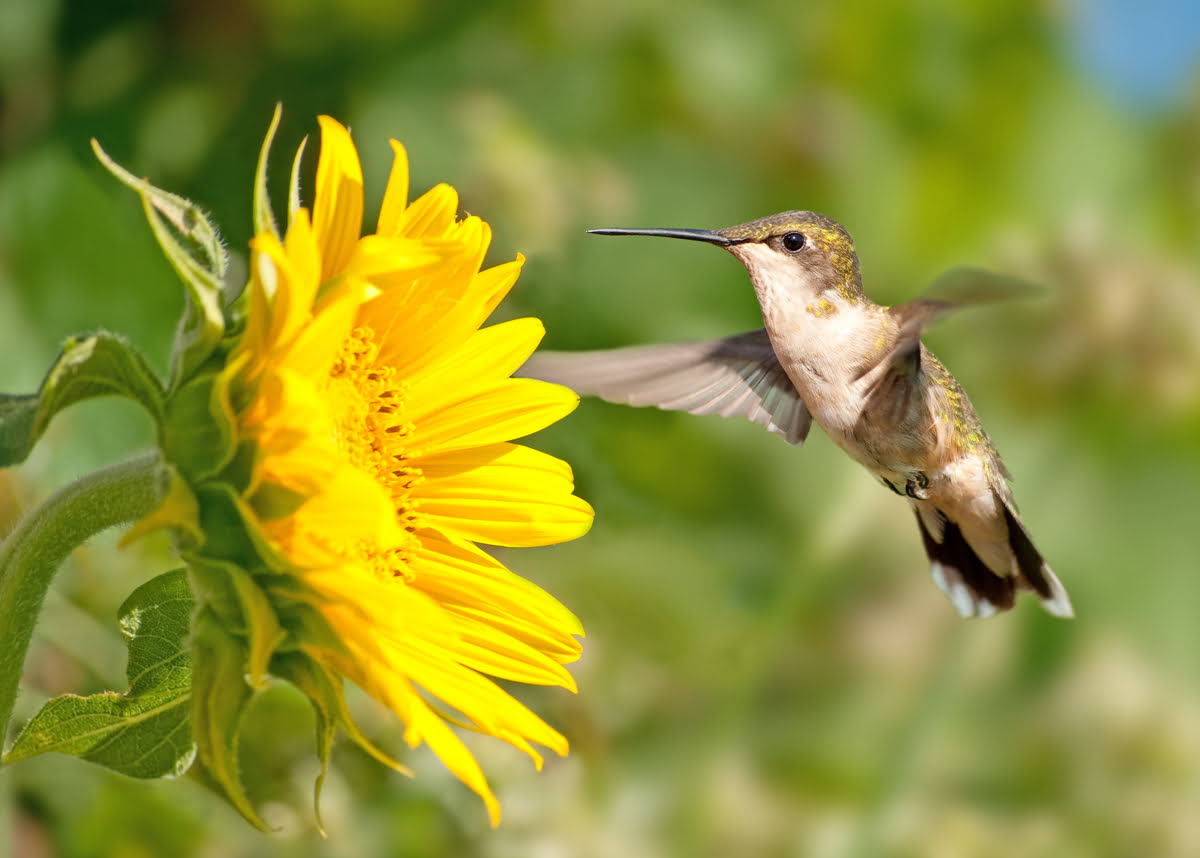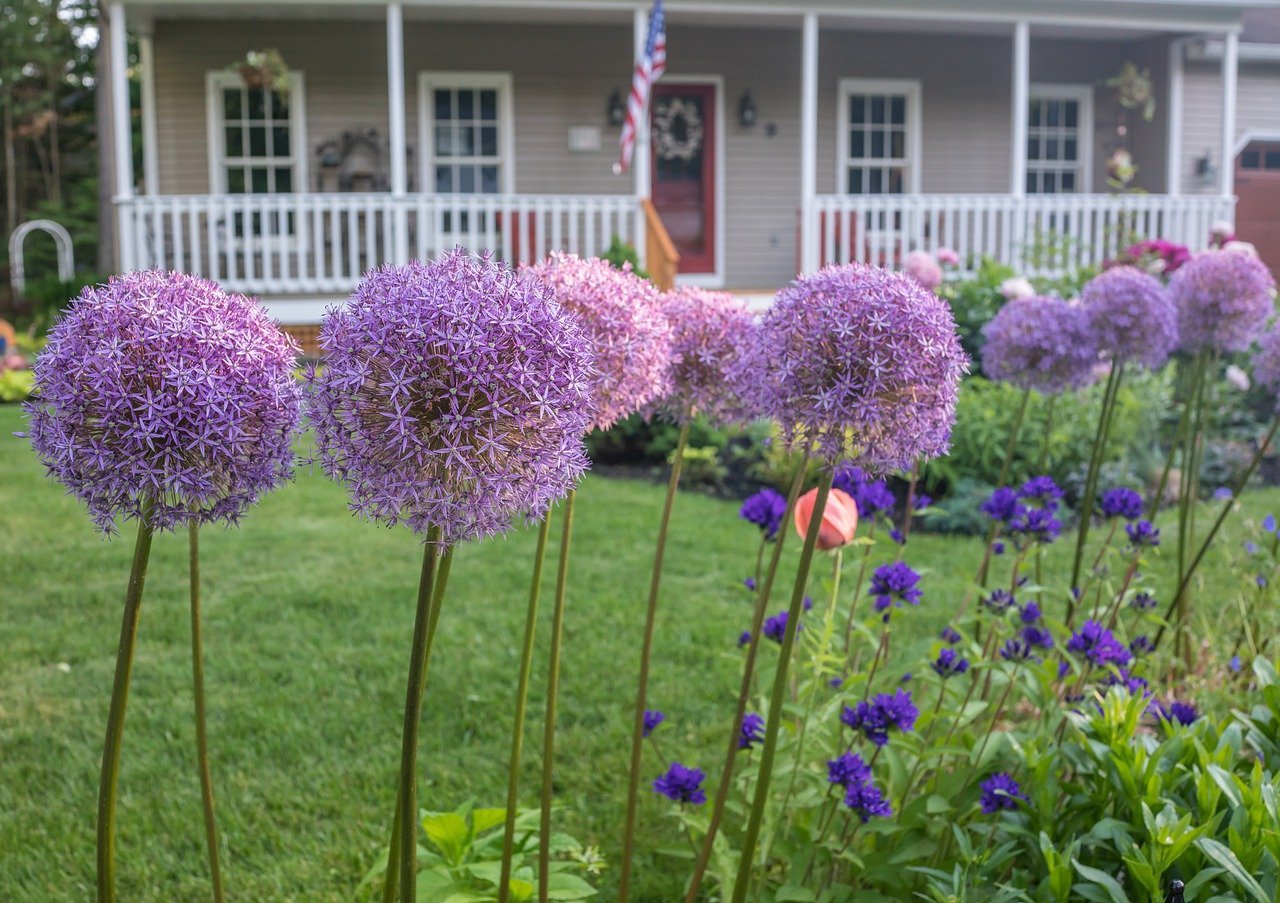Home>Types of Gardening>Ornamental Gardening>How To Keep Animals Away From Sunflowers


Ornamental Gardening
How To Keep Animals Away From Sunflowers
Modified: January 22, 2024
Learn effective strategies for protecting your sunflowers from pesky animals with our ornamental gardening tips. Keep your garden thriving and beautiful.
(Many of the links in this article redirect to a specific reviewed product. Your purchase of these products through affiliate links helps to generate commission for Chicagolandgardening.com, at no extra cost. Learn more)
Table of Contents
Introduction
Welcome to the vibrant world of sunflowers, where these majestic blooms stand tall and proud, basking in the warmth of the sun. As an ornamental gardener, you understand the sheer delight of nurturing these radiant flowers, only to find them vulnerable to the curious nibbles of wildlife. While the presence of animals adds a touch of nature's charm to your garden, their penchant for sunflower feasts can pose a challenge.
In this comprehensive guide, we will delve into the art of protecting your sunflowers from the playful antics of wildlife. Whether you're contending with the inquisitive nature of squirrels, the voracious appetites of deer, or the mischievousness of birds, this article will equip you with effective strategies to safeguard your sunflowers without compromising their natural allure.
Join us as we explore a myriad of natural deterrents, physical barriers, and repellents, along with ingenious scare tactics to keep animals at bay. By the end of this journey, you will possess the knowledge and tools to preserve the splendor of your sunflowers, ensuring that they stand proudly as a testament to nature's beauty. Let's embark on this enlightening quest to harmoniously coexist with wildlife while safeguarding the radiant allure of sunflowers in your ornamental garden.
Understanding the Problem
Before delving into the solutions, it’s crucial to grasp the nuances of the problem at hand. Sunflowers, with their vibrant petals and towering stems, exude an irresistible charm that beckons various creatures. Squirrels, renowned for their acrobatic antics, are drawn to the seeds nestled within the sunflower heads, often leaving a trail of disheveled blooms in their wake. Deer, with their graceful yet voracious appetites, can swiftly diminish a sunflower patch, leaving behind a scene of devastation.
Birds, ranging from sparrows to finches, are also enticed by the sunflower seeds, pecking away at the delicate blooms with unwavering determination. Understanding the unique behaviors and preferences of these creatures is essential in formulating an effective defense strategy. While it’s natural to appreciate the presence of wildlife in your garden, it’s equally important to strike a balance that safeguards your sunflowers without causing harm to the animals.
Moreover, the geographical location of your garden can influence the types of animals that pose a threat to your sunflowers. Urban areas may contend with squirrels and birds, while rural landscapes often face the added challenge of deer intrusion. By comprehensively understanding the specific threats faced by your sunflowers, you can tailor your approach to ensure optimal protection while respecting the delicate ecosystem within your ornamental garden.
With this insightful understanding of the dynamics at play, we can now venture into the realm of natural deterrents, physical barriers, repellents, and scare tactics, each offering a unique and effective defense against the potential harm posed by wildlife. Let’s explore these strategies to safeguard the splendor of your sunflowers and embrace the coexistence of nature within your ornamental garden.
Natural Deterrents
Embracing natural deterrents offers a harmonious approach to safeguarding your sunflowers while respecting the ecological balance of your garden. One effective method involves harnessing the power of scent to deter animals. For instance, planting fragrant herbs such as lavender, mint, or rosemary around your sunflowers can create a natural barrier that repels animals. The potent aromas emitted by these herbs act as a deterrent, steering wildlife away from your precious blooms.
Furthermore, interplanting sunflowers with companion plants that emit odors disliked by animals can bolster your defense. Marigolds, with their pungent scent, are renowned for repelling deer and rabbits, serving as a protective shield for your sunflowers. Similarly, the strong aroma of garlic can deter a wide array of pests, adding an extra layer of defense to your ornamental garden.
Another natural approach involves attracting beneficial insects that can indirectly deter animals. By cultivating a habitat that lures ladybugs, lacewings, and other predatory insects, you create a natural ecosystem where these allies keep pest populations in check. This, in turn, reduces the appeal of your sunflowers to animals, fostering a balanced and self-sustaining defense mechanism.
Moreover, embracing the beauty of nature’s diversity by incorporating a variety of sunflower species can work in your favor. Certain sunflower varieties, such as the “Lemon Queen” or “Autumn Beauty,” boast natural resistance to wildlife due to their less appealing taste or texture. By diversifying your sunflower selection, you can naturally discourage animals from targeting your entire garden, offering a tapestry of blooms that appeals more to your aesthetic sensibilities than to wildlife’s appetites.
By integrating these natural deterrents into your ornamental garden, you can protect your sunflowers while fostering a sustainable and balanced environment. The next step in fortifying your sunflowers involves the implementation of physical barriers, a strategy that provides a tangible defense against wildlife intrusion.
Physical Barriers
Implementing physical barriers serves as a tangible and effective method to safeguard your sunflowers from the persistent advances of wildlife. One approach involves the use of wire mesh or hardware cloth to encircle the sunflower patch. By creating a protective barrier around the perimeter, you can deter animals such as rabbits and groundhogs from accessing the sunflowers. Additionally, securing the bottom edge of the mesh several inches below the soil surface prevents burrowing intruders from compromising the defense.
For aerial threats posed by birds, the strategic placement of bird netting over the sunflowers can provide an unobtrusive yet formidable barrier. This lightweight and nearly invisible mesh impedes avian access to the sunflower heads, effectively thwarting their attempts to feast on the seeds. When deploying bird netting, ensure it is taut and securely anchored to prevent birds from becoming entangled.
Furthermore, the installation of physical barriers can extend to individual sunflower blooms. Encasing the developing sunflower heads in breathable fabric bags or pantyhose shields them from the prying beaks of birds and the inquisitive snouts of small mammals. This targeted approach allows the sunflowers to thrive unhindered while safeguarding the seeds from potential predation.
Another effective physical barrier involves the construction of a sturdy fence around the sunflower patch. Opt for fencing with a height and material that aligns with the specific threats in your area. For instance, deer-resistant fencing should stand at least 8 feet tall to deter these graceful yet determined intruders. To enhance the visual appeal of the barrier, consider adorning the fence with vibrant flowering vines or cascading foliage, seamlessly integrating protection with ornamental charm.
By implementing these physical barriers, you can create a formidable defense that shields your sunflowers from the persistent advances of wildlife. However, for a comprehensive defense that complements these strategies, the integration of repellents and scare tactics can serve as a potent deterrent against animal intrusion, further fortifying the protection of your sunflowers.
Repellents and Scare Tactics
Integrating repellents and scare tactics into your defense strategy offers a multifaceted approach to dissuade animals from encroaching upon your sunflowers. One effective repellent involves the use of homemade or commercially available sprays infused with potent scents that animals find displeasing. For instance, concoctions containing garlic, hot peppers, or predator urine can be applied to the perimeter of the sunflower patch, creating an olfactory barrier that deters animals from venturing closer.
Furthermore, the strategic placement of motion-activated sprinklers can startle and deter animals with sudden bursts of water, effectively discouraging them from approaching the sunflowers. These non-harmful yet startling encounters create a negative association, prompting animals to seek alternative foraging grounds, away from your precious blooms.
Another effective scare tactic involves the utilization of reflective objects, such as aluminum foil strips or old CDs, strategically positioned around the sunflowers. The reflective surfaces disorient and startle birds, deterring them from landing and pecking at the blooms. Additionally, the gentle rustling of the foil strips in the breeze creates an auditory deterrent, further dissuading animals from lingering near the sunflowers.
Integrating visual scare tactics, such as the placement of realistic decoy predators like owls or snakes, can instill a sense of wariness in animals, prompting them to avoid the perceived threat. These decoys serve as silent sentinels, creating a protective aura around the sunflowers and minimizing the risk of animal intrusion.
Furthermore, the strategic deployment of noise deterrents, such as wind chimes or motion-activated sonic devices that emit predator calls, can disrupt the tranquility and discourage animals from approaching the sunflowers. The unpredictable nature of these auditory deterrents creates an environment that animals perceive as unsafe, prompting them to seek refuge elsewhere.
By integrating these repellents and scare tactics into your defense strategy, you can create a multi-sensory deterrent that dissuades animals from encroaching upon your sunflowers, ensuring their undisturbed splendor. As we conclude this comprehensive guide, you are now equipped with an array of strategies to safeguard your sunflowers from the playful antics of wildlife, fostering a harmonious coexistence within your ornamental garden.
Conclusion
As an ornamental gardener, the radiant allure of sunflowers holds a special place in your heart, and the presence of wildlife adds a touch of nature’s charm to your garden. However, protecting these majestic blooms from the inquisitive nibbles of animals requires a thoughtful and multifaceted approach.
By embracing natural deterrents, such as fragrant herbs and companion plants, you can create a harmonious barrier that safeguards your sunflowers while respecting the delicate ecosystem of your garden. Furthermore, the implementation of physical barriers, including wire mesh, bird netting, and targeted encasements, offers tangible protection against wildlife intrusion, ensuring the undisturbed splendor of your sunflowers.
Moreover, the integration of repellents and scare tactics, such as olfactory barriers, motion-activated sprinklers, reflective objects, decoy predators, and auditory deterrents, creates a multi-sensory defense that dissuades animals from encroaching upon your sunflowers. These strategies, when combined, offer a comprehensive approach to safeguarding the radiant blooms that grace your ornamental garden.
As you navigate the intricate balance of coexisting with wildlife while preserving the splendor of your sunflowers, remember that each defense strategy contributes to a harmonious and sustainable environment. By respecting the presence of wildlife and employing these effective techniques, you can revel in the undisturbed beauty of your sunflowers, ensuring that they stand tall and proud as a testament to nature’s enduring allure.
Armed with the knowledge and tools presented in this guide, you are well-prepared to fortify your sunflowers against the playful antics of wildlife, fostering a garden where the vibrant blooms thrive in undisturbed splendor, captivating all who behold their radiant charm.










